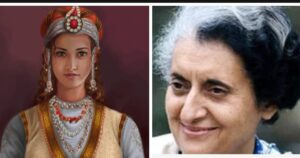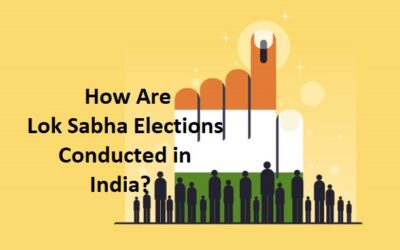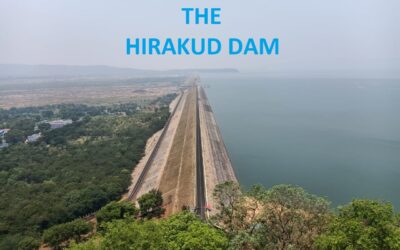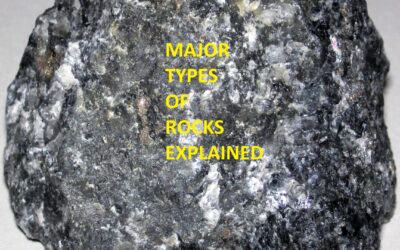Lesson Plan Of Class VII Social Science – For The Month Of June – July
Lesson Plan of Class VII Social Science is prepared for teachers teaching in the elementary school. This class VII social science doctrine includes two chapters in Geography: “Inside Our Earth” and “Our Changing Earth”, and two chapters in History, “Sultan in Delhi” and “Mughal Empire”. , And two major chapters in Political Science. “Government’s role in health and how it is done”. The state government works. This Grade VII Social Science lesson plan will definitely help teachers. In addition, the activities planned in the lesson plan also address the needs of the student.
3 Things You Were Unaware About Class VII Social Science Lesson Plan For August and September
Also read: 12 Places To Visit Near Me – In Chhattisgarh
3 Things You Were Unaware About Class VII Social Science Lesson Plan For August and September
Topics to be covered:
Geography:
Chapter 2. Inside Our Earth
Chapter 3. Our Changing Earth.
History:
Chapter 3 The Delhi Sultans
Chapter 4 The Mughal Empire
Political Science:
Chapter 2 Role of the Government in Health.
chapter 3 How the State Government Works.
Class VII Social Science Lesson Plan – For The Month Of June – July

Class VII Social Science (Geography) Lesson Plan – Activity Based.
Chapter 2
Inside Our Earth
Specific Objective:
- To know what is there Inside our Earth.
- What are the three layers in Our Earth.
- What is Our Earth made up of ?
Teaching Method
Teaching aids: Text Book, Black Board, Watermelon and PPT
Technique: Interactive with common examples.
The teacher begins the chapter by asking a question ” Do you know which gas is present in our Gas cylinder?
Waits for the response. Actually, there is no gas inside the Gas cylinder. It is filled with liquid.
Surprised. Similarly, there are many unknown and interesting facts which are present Inside Our Earth.
In this way, by asking very simple questions, the teacher creates interest in the topic.
Also make sure that the children are involved in the discussion.

UNDERSTANDING INTERIOR OF THE EARTH, CLASS VII
Picks up a water melon.
Shows the cut piece from the top and starts discussing about the different layers present inside Our Earth.
For more interesting facts and to understand this chapter in simple language, click on the link .INSIDE OUR EARTH,
एन सी ई आर टी कक्षा ७ भूगोल पाठ २ “हमारी पृथ्वी के अंदर”
Content/ Teaching Points:
- Interior of the earth.
- The Crust, the Mantle and the Core.
- Rocks and minerals
- Importance of rocks and rock cycle.
Activity:
Topic – Inside Our Earth:
Name of the student: _______
Class & Sec__________
Roll No. _________
Date __________________
Objective:
To know about the different layers of our earth.
Understand the composition of the layers of the earth.

Procedure:
Label and color the different layers of our earth.
Write three sentences describing each layer of earth.
Answer these Questions:
i) ______________- and ______________ elements make up the earth’s crust.
ii) Underground water and sea water are found In __________________ layer of our earth.
III) The second layer of our earth is _____________________ km thick.
iv) The core of our earth is made from _____________ and ___________________.
Class work:
i) MCQ’s and short answer type questions will be done.
ii) Long answer type questions will be discussed and done in the class.
Home-work:
The teacher prepares a worksheet from the chapter.
Values imparted:
Deeper understanding about Mother earth.
Integrated learning:
Integrating with science.
Why first the gas and then the molten magma comes out in case of volcanic eruption. Find out?
Learning Outcome:
After the completion of this chapter, students will be able to
- identify the layers inside the earth.
- understand volcanoes and earthquake.
- identify different types of rocks and rock cycle.
Remedial Measure:
Personal attention to slow learners.
Note: For better understanding of the chapter in simple language, notes and NCERT solutions click on the link https://shapingminds.in/inside-our-earth/ given. Hindi medium students can click on this “हमारी पृथ्वी के अंदर” link.
You may like to read:
60 Geographical Terms Which Always Create Confusion
Best Role Play Activities To Improve Communication Skills
7 SHORT AND EDUCATIONAL SOCIAL SCIENCE ACTIVITIES FOR MIDDLE SCHOOL
Class VII Social Science Lesson Plan – For The Month Of June – July

Class VII Social Science (Geography) Lesson Plan – Activity Based.
Chapter 3 Our Changing Earth
Objective:
- To develop thinking skills in the students.
- To develop a sense of responsibility towards our changing earth.
Specific Objective:
To know about the internal and external forces acting upon the earth.
Teaching Method:
Teaching aids: Text book, Black board, chalk and duster, Images, videos on earthquake and volcanic eruption.
Technique: Diagrammatic Explanation.
The teacher begins the class by asking few simple questions.
i) On which planet do we live? Students answer – Earth.
ii) How many layers are there inside our earth ? Students answer – Three.
iii) Which is the upper most layer ? Students answer – Lithosphere, Crust, Upper layer etc.
iv) What are the physical features on this layer – Students answer Plains, Plateaus, Mountains, sea, ocean, desert etc…
v) Who created these physical features? Students answer – God, Nature
vi) Do you know that once Himalayas were inside the sea. Students response ?????
So, today we will read about how things change on earth.
Content/ Teaching Points:
- Lithospheric Plates
- i) Endogenic forces – Volcanoes and earthquake.
- ii) Exogenic forces. – Wind, river, glacier etc.
- Formation of hills, mountains, plains, DELTA AND ESTUARY
- Making of sea beach, cliff,
- Formation of desert, Loess, Mushroom rocks, sand dunes.
Activity:
The teacher places a hand full of soil on the teachers table.
One student is asked to blow air on the soil placed.
What will the children notice?
Children will notice that the soil spreads on the table.
Another student is called and asked to slowly flow water on the soil.
Now, what will the children notice?
Children will notice that water will further carry soil up to far off distance.
With this activity, the teacher explains how air and flow of water bring about changes on the earth.
Children very easily understand soil erosion and deposition.
Class work:
The teacher discusses all short and objective questions in the class.
Children with make the diagrams of earthquake, volcano, cliff, mushroom rock etc.
Home Work:
Read more about physical features of India.
Try to find out how these physical features were formed.
How Himalayas are useful to us? हिमालय-भारत का सबसे कमज़ोर पर्वत
Mark the important Physical features in the outline map of India.
Values Imparted:
To develop a sense of awareness towards physical features.
To appreciate and accept the changes in nature.
Integrated Learning:
Integrating with Disaster Management
What precautions do you need to take at the time of earthquake, Tsunami and flood. क्यों आते हैं जापान में भूकंप-ज्वालामुखी-सुनामी ?
Learning Outcome:
After reading the chapter children will be able to
identify endogenic and exogenic forces.
differentiate between different types of rocks.
understand the formation of soil, rocks and rock cycle.
Remedial Measures:
Each One – Teach One.
Students with better understanding will clear the doubts of slow learners in the presence of teacher.
Class VII Social Science Lesson Plan – For The Month Of June – July

History:
Chapter
3 The Delhi Sultans
Objective:
- Students will acquire knowledge about the History of Delhi.
- They will be sensitized towards History of the past and learn about their Heritage.
Specific Objective:
To know about the rulers of Delhi.
To know about the administration of Delhi rulers during 15th and 16th century.
Teaching Method:
Teaching aids: Text book, Map of Delhi sultanate, Pointer, PPT, Videos on Delhi sultanate from you tube.
Technique: Interactive and story telling method.
The teacher interacts with the students by asking few questions.
How many of you have gone to Delhi? Students response 5 to 8 students will say that they have visited.
Did you see the Qutub Minar there? 4 to 5 students will reply yes.
Do you know when and by whom Qutub Minar was built? One or two students will say Qutbuddin Aibak.
How many of you know that his father sold him when he was very small ?
Do you want to know the interesting story behind this?
In this way the teacher is able to draw everybody’s attention and through story telling method explains the chapter.
Content/ Teaching Points:
Finding Out about the Delhi Sultans.
From Garrison town to empire: Expansion of Delhi Sultanate.
Administration and Consolidation under the Khalji’s and Tughluq’s.
The sultanate in the 15th and 16th centuries.
Activity:
1.Making of Timeline.
2. Find out the buildings built by the Sultans of Delhi around the city.
Two rows on the left will prepare the timeline and the other two rows will find the name of buildings.
You will be given 25 minutes to complete this work.
Class work:
- NCERT question answers will be discussed and done in the class.
Home Work:
- Paste or draw the pictures of all the rulers who ruled over Delhi during 15th and 16th century

- Identify both the famous personalities..
- Do you think women leaders are accepted more readily today ?
Values Imparted:
Leadership traits and skills.
Love for Language, art and architecture.
Integrated Learning:
- Integrating with Hindi.
Like “झाँसी वाली रानी” write a short poem on Raziya Sultan.
- Integrating with Political science
Compare the administration of that time with today’s democracy rule. Which one in your opinion is better. Why?
Learning Outcome:
After the completion of the chapter, children will be able to
Remember, recognize and enlist the names of Delhi sultanate rulers in sequence.
Explain the development, rise and fall of Delhi sultanate.
Remedial Measures:
- The teacher will help the slow learners in doing the question answers.
- Will provide short notes in simple language.
Class VII Social Science Lesson Plan – For The Month Of June – July

History: Chapter 4
The Mughal Empire
Objective:
To develop interest in knowing about India’s past.
To make connections between the past and the present.
Specific Objective:
Students will acquire knowledge about the rise and fall of the Mughal Empire.
Children will also learn about the new architectural styles of the Mughal period.
Teaching Method:
Teaching aids: Text book, Map of Delhi sultanate, Pointer, PPT, Videos on Mughal empire from you tube.
Technique: Interactive, Explanatory and story telling method.
The teacher begins the class by asking some general questions.
Have you heard about any Mughal ruler before? Students response – Yes teacher.
Can you name some? Student’s response – Akbar, Jahangir, Aurangzeb, Shah Jahan, …
O.K. Who built the Taj Mahal? Student’s response: Shah Jahan
Can anyone tell me where is Panipat? Student’s response : Punjab, Haryana, Near Delhi, Rajasthan.
Do you know who fought the first battle of Panipat. Students response: silence…..
Now, the teacher is able to draw the attention of the students.
Taking advantage of the situation, the teacher begins the chapter by telling the story of the first battle of Panipat.
Content/ Teaching Points:
- Who were the Mughals.
- Mughal military campaigns.
- Mughal tradition of succession.
- Relations with other rulers.
- Mansabdars and Jaghirdars
- Zabt and Zamindars
- Akbar’s policies.
Activity:
Objective of conducting activity:
To know in detail about the role of Mughal emperors.
Topic:
Who was the greatest Mughal emperor: Akbar, Jahangir, Shah Jahan or Aurangzeb?
Method:
The teacher will divide the class in four groups.
Each group will be named as Akbar, Jahangir, Shah Jahan and Aurangzeb.
Every group will be given time to prepare and discuss in detail on the topic given.
The next day, four children, one from each group will be called to discuss the merits of their rulers for 10 minutes.
Next, four more students, one from each group will be called to discuss the demerits of their rulers for next10 minutes.
After 10 minutes, four students will discuss about the battles fought by them and
next four students will discuss about the buildings, monuments and gardens constructed by the rulers.
The teacher, observes, judges and records the discussion.
Assessment criteria:
- Knowledge and understanding of the topic
- Presentation
- Involvement and
- Accuracy
Activity – II
Name of the activity:
Framing the questions.
Method:
The teacher asks the students of the four groups (divided earlier) to prepare 15 answer in one word questions.
All 15 questions must be written in single page and in good handwriting.
Time limit 20 minutes.
Each group start making 15 questions on their topic e.g. group 1 will prepare on Akbar.
After 20 minutes, the teacher collect all four sheets from the groups.
After collecting it from the students, the teacher exchanges the sheets.
For example, the sheet which has 15 questions on Akbar will be given to group 3 to solve in 10 minutes.
Questions prepared by group 2 on Jahangir will be given to group 4 to solve in 10 minutes.
After the completion of 10 minutes, the teacher collect the sheets.
Hand it over to the group who prepared the questions to evaluate.
Each group will evaluate and write the final marks on the sheet and will submit it back to the teacher.
After crosschecking the answers, the teacher enters the marks in register.
All four sheets are displayed on the class board for one week.
Class work:
The teacher discusses all short and objective questions.
After discussion, the students write in their note book.
Home Work:
Read about Akbar’s Din-i Ialhi.
Do you think the present day communal tensions can be addressed through such inclusive religious practices.
Values Imparted:
Leadership traits and skills.
Love for Language, food, life-style, art, religion and architecture.
Integrated Learning:
Not Planned.
Learning Outcome:
After reading the chapter children will be able to
- Identify the Mughal rulers.
- understand the term Mansabdars and Jaghirdars, Zabt and Zamindars
- know the intent of Akbar’s policies.
- find out the reasons for the decline of Mughal empire.
Remedial Measures:
Pair and Share method will be used to take care of slow learners.
Class VII Social Science Lesson Plan – For The Month Of June – July

Class VII Social Science (Geography) Lesson Plan – Activity Based.
Chapter 2
Role of the Government in Health.
General Objective:
To develop social and political awareness among the children.
To inculcate good moral values in the students.
And to develop scientific temperament and citizenship qualities.
Specific Objective:
To make children aware about the public health facilities provided by the government.
Teaching Method
Teaching aids: Text Book Images PPT’s and short videos.
Technique: Interactive.
The teacher begins the chapter by asking general questions.
How many have to seen a hospital. Students response – all will raise hands.
Have you ever visited any hospital – students response – Yes.
What do we get in the hospital – Students response – Treatment, medicines.
Who constructs the hospitals? Students response – Rich people, Businessman, Government.
Do you know the difference between rich man’s hospital and Government hospital. Students response ????
So, today we will know many things about rich man’s hospital and government hospital.
A rich man’s hospital is called Private hospital and
A government hospital is called Public hospital.
Further, the teacher continue telling the merits and demerits of both the hospitals.
Content/ Teaching Points:
- What is health?
- Health care in India.
- Difference between public and private healthcare services.
- Healthcare and equality.
- What can be done?
Activity:
The teacher plans to take the students to a private hospital and a near by government hospital.
Class work:
i) Exercise questions will be discussed and done.
ii) Compare the health facilities provided by the private and Government hospitals.
Home-work:
- Write a paragraph in Hindi or in English describing the importance of Mental and Physical health.
- Describe the role played by our doctors, nurses and all hospital staff during this pandemic situation.
Values imparted:
Service before self.
Respects the efforts made by the government, doctors, nurses etc. in towns and remote areas.
Integrated learning:
Integrating with sports.
- Which game do you love to play. What is the benefit of playing games.
- Write a letter to your Principal demanding one games period everyday.
- Also write a letter to the health minister of India to improve the condition and increase facilities in the government hospitals in your area.
Class VII Social Science Lesson Plan – For The Month Of June – July

Class VII Social Science (Geography) Lesson Plan – Activity Based.
Chapter 2
Role of the Government in Health.
General Objective:
To develop interest in the subject.
To understand the role of Government.
Specific Objective:
To make children aware about the public health facilities provided by the government.
Teaching Method
Teaching aids: Text Book Images PPT’s and short videos.
Technique: Interactive and by using play way method through activities.
With the help of chalk and duster, the teacher draws a state and explains the process of election.
Content/ Teaching Points:
- Who is an MLA?
- A debate in the Legislative assembly.
- Working of the Government.
- Important terms like constituency, Opposition, MLA, Majority, Press conference.
Activity:
Topic:
Election of a Monitor in the class.
Purpose:
To show the process of election in the state.
Method: Play way
The teacher asks how many students want to be a monitor of the class?
After receiving 4-5 names, the teacher gives them a form to file their nominations.
Each candidate gets a symbol for their party as pen, chalk, duster, book and tiffin box.
Now, every candidate gets a chance to speak what work will he/she will do after winning the elections.
Election date if finalized.
In the corner of the classroom, the teacher places a ballot box.
Each student will write the name of his favorite candidate along with his party’s symbol and drop it in the ballot box.
Few students will be called in the presence of a teacher, to open the ballot box and count the number of votes.
The number of votes will be written on the black-board for all students.
Once, the counting is over, the winner’s name will be declared by the teacher.
In this way, children will enjoy, participate and learn the process of election in the state.
Similarly, the other day the teacher may organize a mock debate in the Legislative assembly.
Class work:
The teacher discusses the text book questions both, objective and subjective.
Children will complete their work in the class in the presence of a teacher.
Home-work:
Find out, who is the chief minister of your state? Also find out and write the name of the MLA from your constituency.
Values imparted:
Develops team spirit.
Understands the importance of voting.
Learning outcome:
After reading this chapter children will be able to
- define the terms like constituency, Opposition, MLA, Majority, Press conference.
- identify the MLA and his role.
- understand about the working of a government.
Integrated learning:
Not planned.
NOTE:
Was this lesson plan helpful to you?
Your feedback is important for us. You can mail me your feedback.
Subscribe for more lesson plans, worksheets and Term I Question papers of Social Science.
Class VII Social Science Lesson Plan – For The Month Of June – July
Conclusion:
We hope that Class VII Social Science lesson plans will help teachers. Separately, CBSE has integrated one state with another this year. It can also be included in the social sciences lesson plan. Click the link below to get an idea
Integrating Bihar with Tripura and Mizoram Under Ek Bharat Shreshtha Bharat
Integrating Chhattisgarh with Gujarat – Complete Guidance
3 Things You Were Unaware About Class VII Social Science Lesson Plan For August and September
3 Things You Were Unaware About Class VII Social Science Lesson Plan For August and September





Thanku sir, will help all the teachers related to social science.
Thanks for your support.
Helped me a lot
Saved my time, very creative, given me ideas, suggestions, specially previous questions
Thanks, Khushboo for your wonderful and encouraging response. keep visiting shapingminds.in
It is very informative and guides social teachers.
Thank you, Meena for your positive and encouraging response. Pl. share with your friends and keep visiting shapingminds.in
Yes it was very useful.
Thank you Gowri for your encouraging comment. Keep sharing and visiting
shapingminds.in